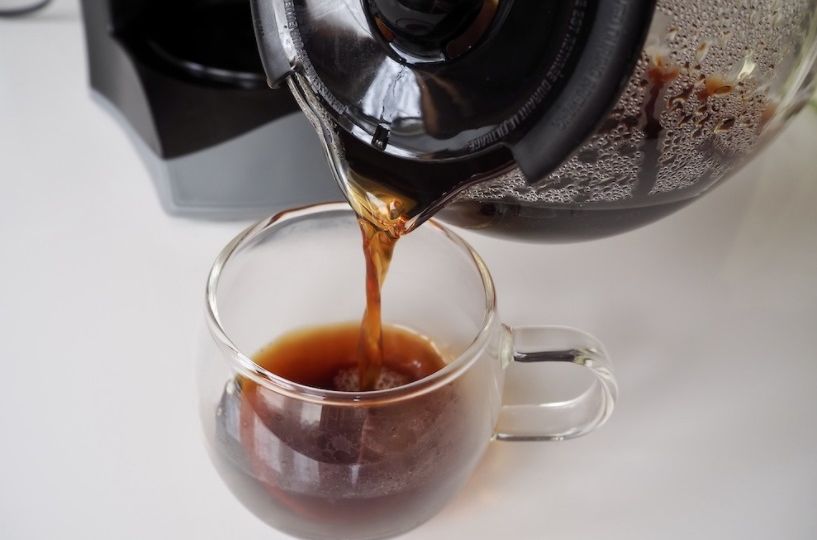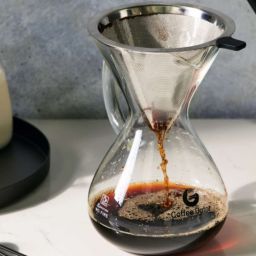
Drip coffee is one of the most common and cherished ways to enjoy coffee around the world. It involves brewing coffee by pouring hot water over ground coffee, which then drips through a filter into a carafe or pot. Its popularity stems from both its simplicity and the ability to customize it to one’s personal taste. Whether in a bustling café or during a quiet morning at home, drip coffee offers a consistent and accessible quality that makes it a staple among coffee enthusiasts.
Key Takeaways
- Importance of Water Quality and Temperature: The temperature of the water used to brew drip coffee is critical for extracting the full flavor from the coffee grounds. Ideally, water should be heated to between 195°F and 205°F. This range is hot enough to extract effectively but not so hot as to impart bitterness.
- Correct Coffee-to-Water Ratio: The ratio of coffee to water can significantly affect the strength and taste of the coffee. A common starting point is 1 to 2 tablespoons of ground coffee for every 6 ounces of water. However, this can be adjusted depending on whether you prefer a stronger or more mellow cup.
- Importance of Fresh Coffee: Using fresh, high-quality coffee beans and grinding them right before brewing can dramatically improve the taste of your coffee. Freshly ground coffee maintains more of its natural flavors and aromas, which can be lost in pre-ground varieties.
- Role of the Coffee Maker: A clean and properly functioning coffee maker is crucial for a good brew. Regular maintenance and cleaning of your coffee maker ensure that old coffee oils and residues do not contaminate your fresh brew, leading to a purer and more enjoyable cup of coffee.
Cleaning and Preparing the Coffee Maker
Before brewing, it’s crucial to start with a clean coffee maker. Old residues and oils from previous brews can leave an unwanted taste in your coffee. Begin by washing all removable parts with warm soapy water. For a deeper clean, run a mixture of equal parts water and white vinegar through the coffee maker, followed by a cycle of just water to rinse any vinegar residue. This not only improves the taste but also prolongs the life of your machine.
Selecting and Grinding Coffee Beans
Choosing the right coffee beans is the next important step. Opt for high-quality beans that suit your taste preference—be it a light, medium, or dark roast. Freshness is key, so buy beans that have been roasted recently and store them properly to maintain their flavor.
Once you have your beans, grinding them correctly is imperative for the perfect cup of drip coffee. The grind consistency should match your brewing method; for drip coffee makers, aim for a medium grind, similar to the texture of sand. This consistency allows for optimal water contact without over-extracting, which can lead to bitterness. Grind your beans just before brewing to ensure the freshest flavor, as ground coffee begins to lose its richness and aroma within minutes.
Step-by-Step Brewing Instructions
1. Measuring Water and Coffee: Start by measuring the correct amount of water and coffee. For a standard cup of drip coffee, a good rule of thumb is to use about 1 to 2 tablespoons of coffee per 6 ounces of water. Use a kitchen scale for precision if available, as this will ensure consistency in your coffee’s strength and flavor.
2. Preparing the Coffee Maker: If you’re using an automatic drip coffee maker, fill the reservoir with the measured water. For manual drip coffee makers, you’ll need to boil the water separately, ideally in a kettle that allows you to control the pouring process.
3. Adding Coffee to Filter: Place a clean filter in the coffee maker’s basket. Add the ground coffee to the filter, spreading it evenly. This ensures an even soak and extraction, which is crucial for a well-balanced brew.
4. Brewing the Coffee:
- Automatic Drip Coffee Makers: Simply start the machine. These devices heat the water to the right temperature and disperse it over the coffee grounds.
- Manual Drip Coffee Makers: Pour a small amount of hot water over the grounds to “bloom” them. Wait about 30 seconds before continuing to pour the rest of the water slowly in a spiral motion, ensuring all the grounds are evenly saturated.
Adjusting Brewing Variables
Temperature: The optimal water temperature for brewing coffee is between 195°F and 205°F. Many automatic coffee makers take care of this, but if you’re using a manual method or your machine doesn’t heat water to this range, you might need to monitor the temperature with a thermometer.
Brewing Time: The total brew time should be about 4 to 6 minutes. If your coffee tastes too bitter, it might be over-extracted, requiring a shorter brew time or coarser grind. Conversely, if it’s too weak or sour, consider extending the brew time or using a finer grind.
Experimentation: Don’t be afraid to adjust these parameters based on your taste preferences. The beauty of drip coffee is its adaptability. Some prefer a stronger brew with more coffee and less water, or vice versa. Experimenting with different brew times and temperatures can also help you craft the perfect cup that suits your palate.
Exploring Coffee Origins and Roast Profiles
One exciting way to elevate your drip coffee experience is by experimenting with different coffee origins and roast profiles. Each origin, whether it be Colombia, Ethiopia, or Sumatra, brings unique flavors and characteristics to the brew.
Light roasts can offer bright and acidic notes, while dark roasts typically provide a richer and more robust flavor. By trying coffees from different regions and roasts, you can discover a palette of flavors that might surprise you.
Utilizing Specialized Equipment
To further refine your coffee brewing:
Specialized Filters: Consider upgrading your filter choice. Paper filters are great for a clean cup, free of sediments, but they can absorb some of the oils that contribute to the coffee’s flavor. A metal or cloth filter allows more oils to pass through, which can enhance the richness of the coffee.
Coffee Scales: Precision matters in brewing good coffee. Using a coffee scale to measure your grounds and water can make a significant difference in consistency and taste. This ensures that you use the exact amount of coffee and water each time, leading to a perfect brew with every pot.
Temperature-Controlled Kettles: For those using a manual drip method, a kettle with temperature control can be a game-changer. It allows you to heat water to the optimal temperature range of 195°F to 205°F, crucial for proper extraction without burning the coffee.
FAQs
How do I fix over-extraction and bitterness in my drip coffee?
Over-extraction often leads to bitter coffee. To remedy this, try using a coarser grind, shorter brewing time, or cooler water. Each of these adjustments can help reduce the extraction rate, balancing the flavors to avoid bitterness.
Why is my drip coffee weak?
If your coffee tastes weak, it might be under-extracted. Ensure you’re using enough coffee grounds, and check if your grind is too coarse. Adjusting to a finer grind or extending the brew time can help extract more flavor from your beans.
Can I reuse coffee grounds?
It’s not recommended to reuse coffee grounds. The desirable flavors and oils are extracted during the first brew, leaving the reused grounds to produce a flat and unsatisfying cup.
Final Thoughts
Making good drip coffee is both an art and a science, requiring attention to detail and an openness to experiment. Here are some key points to remember:
- Water Temperature and Quality: Heat water to the optimal range of 195°F to 205°F and use filtered water for the best taste.
- Coffee-to-Water Ratio: Start with 1 to 2 tablespoons of coffee per 6 ounces of water, and adjust to your taste.
- Freshness: Use freshly ground beans to maximize the flavor and aroma of your brew.
- Equipment Maintenance: Regularly clean your coffee maker and consider upgrading your brewing tools like filters and kettles for better results.
Experiment with different beans, grinds, and brewing parameters to find your ideal cup of drip coffee. Each adjustment can reveal new aspects of your coffee’s flavor, allowing you to tailor each cup to your liking.









